In classic Ferrari math, front-mounted engine + 12 cylinders = good. The following also holds true: 2 + 2 (seats) = less money. Subtract again for anything with less-than-stellar looks. Subtract more for the lack of a clutch pedal. These equations best describe the 365 GT4/400/412 series of cars, built during the 1970s and 1980s, and they don’t add up to anybody’s favourite Ferrari. But with a 17-year duration, this was the longest-running production car in the company’s history, and with most values well under six-figures, it’s the cheapest way to buy a made-in-Maranello V12.
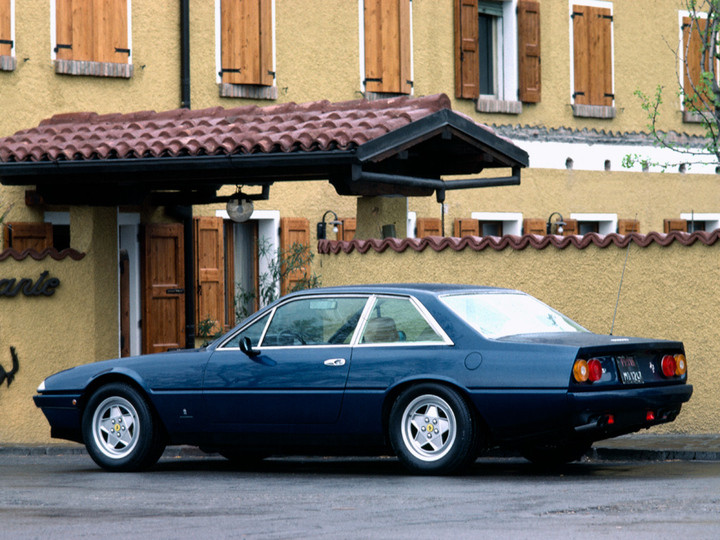
By the early 1970s, Ferrari had been selling cars with small rear seats for over a decade, and there was a proven customer base for the company’s more practical models. The 365 GT 2+2, introduced in 1967 and casually dubbed “Queen Mary” due to its massive (by Ferrari standards) size, was a strong seller but also showing its age by 1971. The supple curves of 1960s Ferraris started giving way to the sharp wedge shapes of the 1970s, foreshadowed by the 365 GTB/4 Daytona and 365 GTC/4, and gradually adopted in the rest of the company’s lineup. For the next four-seater Ferrari, after the 365 GTC/4, Leonardo Fioravanti at Pininfarina penned a three-box folded-paper wedge with six taillights at the rear, pop-up headlights up front, and more space inside.

It was cutting-edge stuff when the new 365 GT4 2+2 debuted at the Paris motor show in 1972, although what was underneath was more conventional. The 4390cc V12 was familiar, fed by six side-draught Weber carburettors for 340bhp, although Ferrari didn’t specify an exact figure in the catalogue. The five-speed manual mounted in-unit with the engine, and a torque tube routed power to the limited-slip differential at the rear. The tubular steel chassis was similar to that of the GTC/4 it replaced, while niceties like Connolly leather, power steering, and air conditioning came standard. Rear seats were tight but not comically small, and the four-chair Ferrari could hit 150mph in quiet comfort. Autocar, testing the new Ferrari against home-team competitors like the Rolls-Royce Corniche, Jensen Interceptor, and Aston Martin DBS, concluded: “Our own vehicles can all compete on one level or another. But none of them can compete with the Ferrari on all levels.” When it came out, the four-seater was more expensive than even the Daytona, which was then the world’s fastest production car.
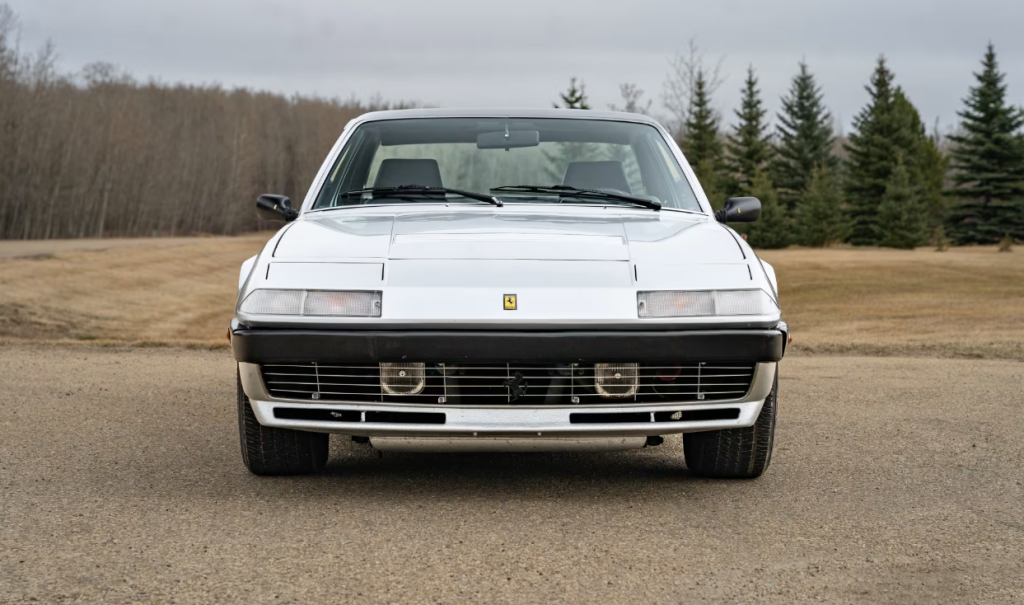
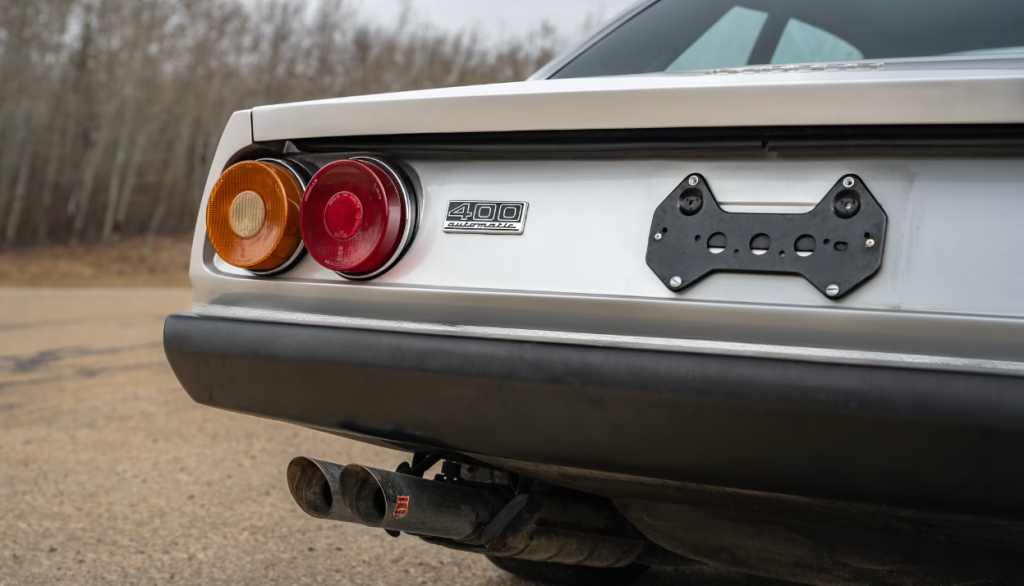
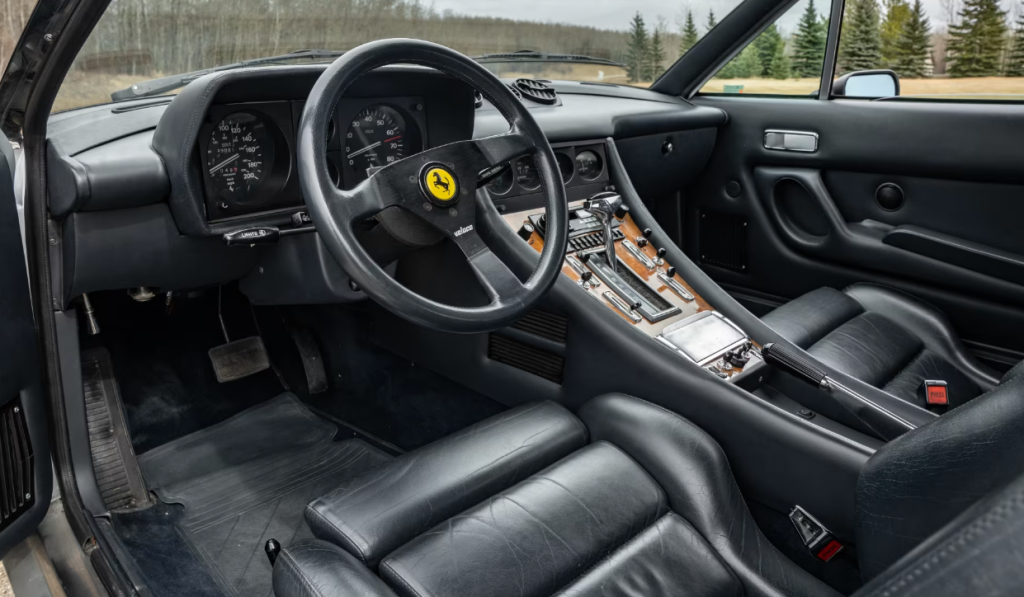
After selling 524 examples of the 365 GT4, Ferrari updated the model for the 1976 Paris motor show and dubbed it the 400 GT. The V12 engine grew to 4823cc and there were some cosmetic changes, including a reduction from six to four taillights, new five-bolt wheels (instead of centrelocks on the 365), a chin spoiler, and revised interior. The biggest change, however, was between the seats.
The 400 GT has the unenviable distinction of being the first Ferrari sold with an automatic transmission. Doubly blasphemous was that it was a mass-produced foreign job, the three-speed Turbo Hydramatic made by General Motors. An insult to the purists, sure, but the TH was a tried-and-true unit that had been capably shifting gears in Jaguars and Rolls-Royces for years, and by the end of the 400 series in the late 1980s, about two-thirds of buyers chose the auto over the five-speed. This was a mature Ferrari, one for the cigar lounge rather than the night club. The roomier interior and do-it-for-you gearbox widened Ferrari’s customer base, and from 1976 to ’79 a further 502 people bought one before Ferrari revised the model again.
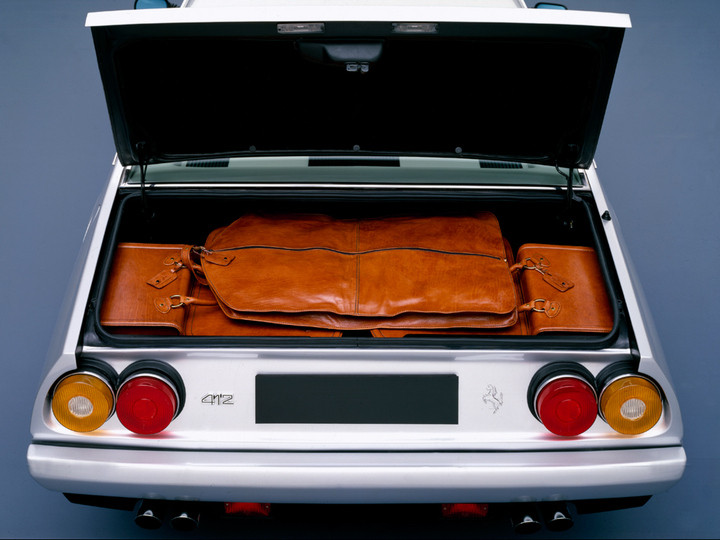
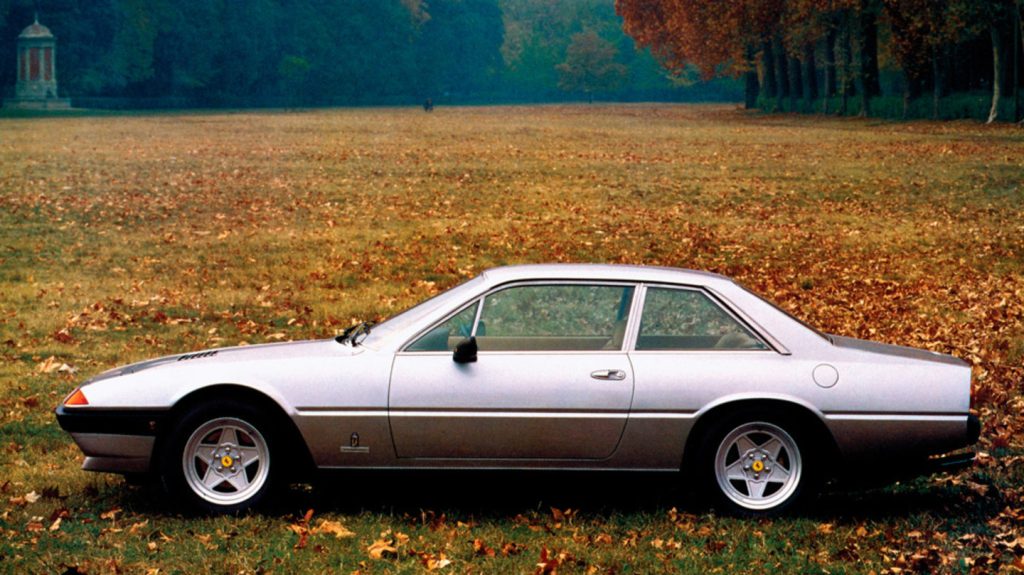
They called it the 400i, with “i” indicating the new Bosch K-Jetronic fuel injection that replaced the Webers. Power dropped from 340bhp to 310 with the injection, and most drivers prefer the sound and feel of the carburettors, but emissions were much improved in the 400i. A power sunroof also arrived on the options list, while Ferrari further improved the interior and added new wheels. 1305 examples sold.
The 400 was already the longest-lived production Ferrari in 1985, but at that year’s Geneva motor show Ferrari announced that the same basic platform would continue with the new 412. The engine got a slight increase in bore, yielding nearly 5.0 litres of displacement. Performance recovered to the 340bhp of the original carburetted 400 GT. A raised trunk gave more luggage space, and the bumpers were now body colour. Ferrari also added new alloy wheels, antilock brakes, and improved front suspension. Nearly 600 sold before Ferrari finally ended the 365 GT4/400/412 series in 1989. A black 412 with the licence plate “HUMAN” gets a lot of screen time in Daft Punk’s 2006 film Electroma, and the movie car later sold at a charity auction for about $42,000.
Thirty-five years later, the 365 GT4/400/412 series still holds the title of longest-produced Ferrari road car, and it probably always will. Commercially, it was an undeniable success. But as a four-seat model associated with slushboxes and looks often compared to a third-gen (1985–89) Honda Accord, these cars quickly joined the ranks of cheap Ferraris, along with other more unloved models like the Mondial and Dino 308 GT4. Fifteen years ago, the world’s nicest 365 GT4 2+2 (the most valuable of the series) didn’t even cost £70K. The world’s nicest 400 GT automatic cost less than £50K. Cheap to buy but expensive to maintain, cars like this also don’t have the best survival rate, and some examples were cannibalised for their desirable V12 engine. Despite that, solid examples do come up for sale somewhat regularly.
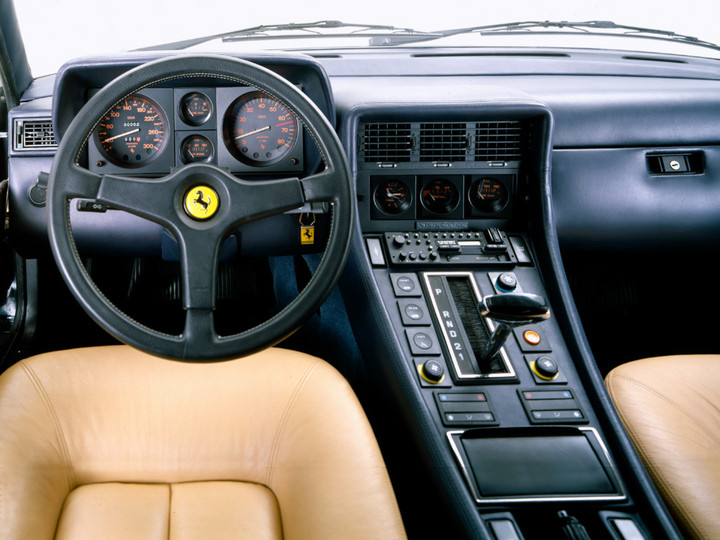
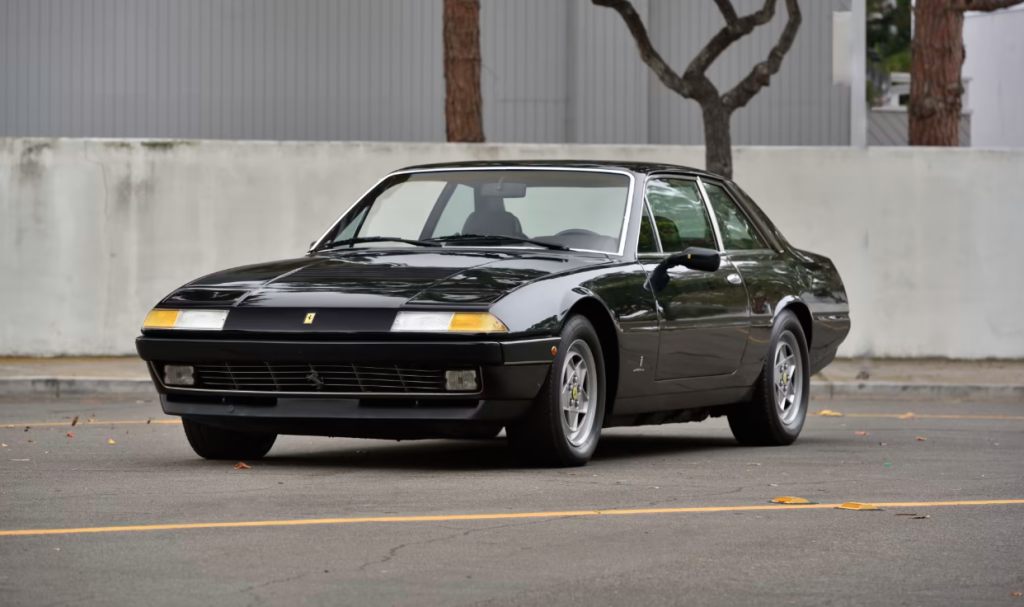
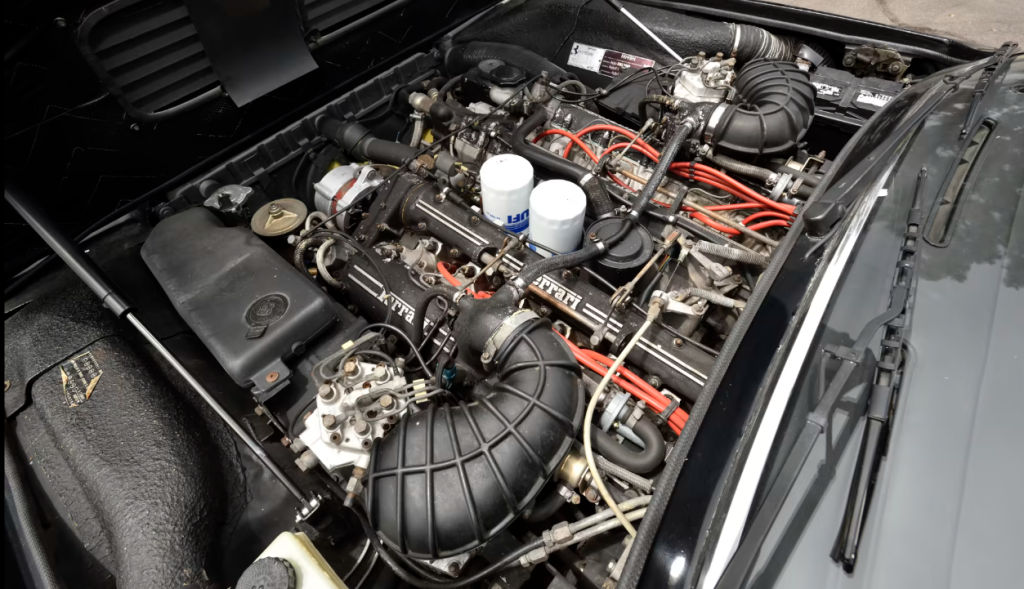
The 365 GT4 and 400/412 didn’t get left behind in the hot market of the early 2020s, and from the beginning of 2020 to today their #2 (excellent) values are up. Yet they’re still in affordable (for a Ferrari) territory, with most cars currently selling in the mid-five-figure range. Manual transmissions naturally command a big premium: 40 per cent on a 400 GT, and 50 per cent on a 400i or 412. In terms of desirability, 400 GTs sit at the bottom, followed by 400is and then 412s, with the rarer manual-only 365 GT4 2+2 at the top.
These were a more mature Ferrari when they were new, and they still appeal to a more mature crowd today, with most interest coming from enthusiasts who are Gen X or older. What that means for the future of these underappreciated gran turismos isn’t clear, but these have long been the most affordable way to get a prancing horse on your keychain and a singing V12 in front of your right foot. All signs point to them staying that way.










